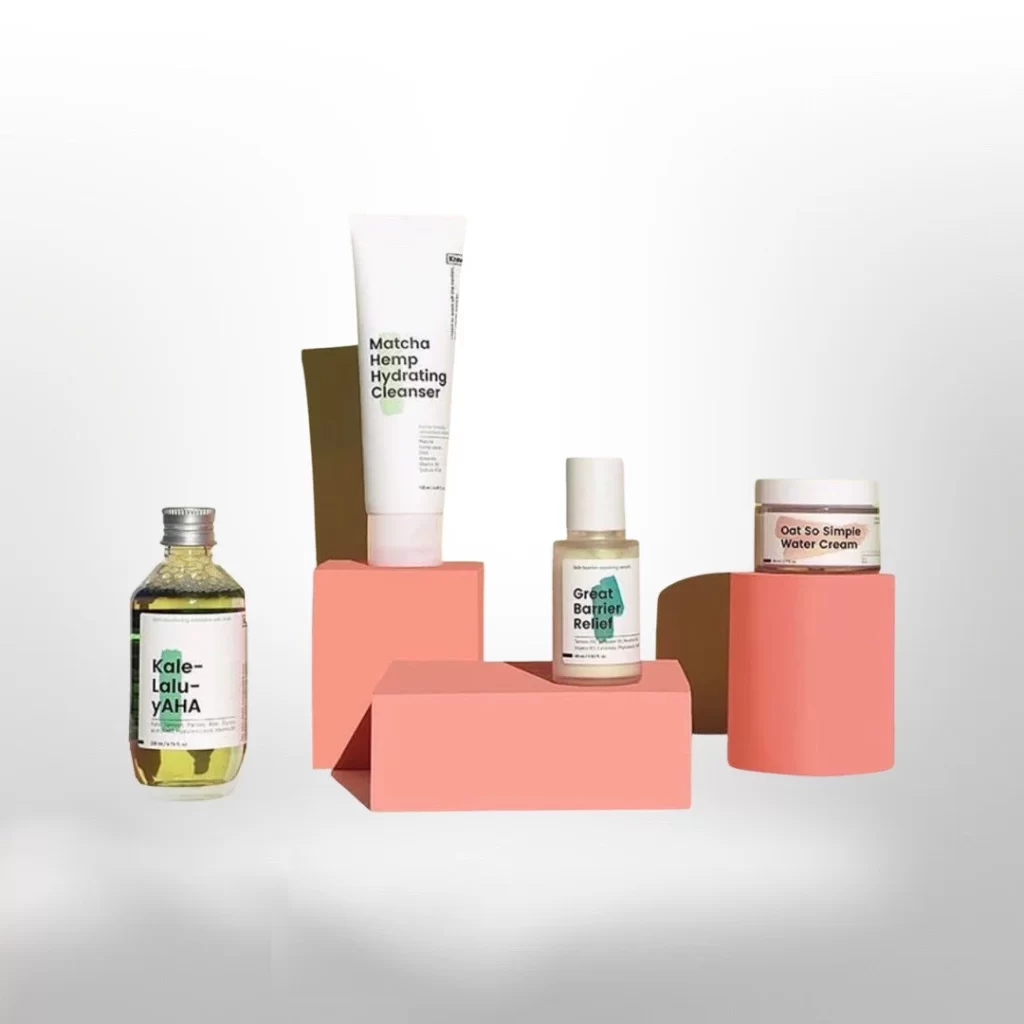As a skincare blogger, it’s important to address common misconceptions in the beauty community. One such misconception is that individuals with oily skin should avoid oil-based cleansers. In reality, oil cleansers can be a game-changer for those with oily, sensitive, and acne-prone skin. Let’s dive into the science behind why oily skin types should embrace oil-based cleansers and how to effectively incorporate them into your skincare routine.
The Science Behind Oil-Based Cleansers
Breaking Down Excess Sebum and Impurities
To understand the benefits of oil-based cleansers, we need to grasp the basic principles of chemistry. As the saying goes, “oil and water don’t mix.” However, oil does mix with oil. This property allows oil-based cleansers to effectively break down and remove excess sebum, makeup, silicones, and sunscreen – all of which are oil-based impurities that can clog pores and contribute to acne.
Natural oils vs oil-based cleansers
While natural oils like castor or coconut oil can be used for oil cleansing, specially formulated oil cleansers designed to emulsify and wash off easily with water are typically more effective and leave behind no oily residue.
How to Use Oil-Based Cleansers Effectively
Using oil-based cleansers is a straightforward process that can be easily incorporated into your skincare routine, oil based cleansers should be used with water-based cleansers for effective cleaning also called double cleansing routine.
Follow these steps to make the most out of your oil-based cleanser:
Apply the Cleanser
Begin by applying a sufficient amount of oil-based cleanser to your face. Gently massage the cleanser onto your skin, focusing on areas prone to excess oil production or congestion, such as the T-zone.
Emulsify with Lukewarm Water
To effectively remove the cleanser, add lukewarm water to emulsify it. Cold water is not as effective in breaking down the oil-based cleanser. The emulsification process allows the oil to turn milky, making it easier to rinse off with water.
Enhance Cleansing with a Face Massage
To enhance your cleansing routine, consider incorporating a face massage during this step. Massaging promotes circulation, resulting in a healthy glow and deeper cleansing.
After thoroughly massaging the oil cleanser all over your face, rinse it off with lukewarm water.
Opt for solid oil cleansers to avoid drips and mess though it’s just a personal preference.
The Second Cleanse: Water-Based Cleansers
After completing the initial cleanse with an oil-based cleanser, it’s essential to follow up with a water-based cleanser. This step ensures the removal of sweat, dirt, and water-based debris that may still be present on your skin. Water-based cleansers come in various forms, such as gels or foams, and the choice depends on personal preference and skin type.
Contrary to popular belief, the temperature of the water used with a water-based cleanser does not affect its efficacy. Additionally, it’s important to note that foaming cleansers do not provide any extra benefits or increased effectiveness compared to non-foaming cleansers. The foam is simply a result of consumer preference for bubbles.
The Importance of pH in Cleansers
When choosing a cleanser, it’s crucial to consider its pH level. The pH of a substance indicates its acidity or alkalinity. Your skin’s natural pH is slightly acidic, usually around 5.5. If the pH of a cleanser is too alkaline, it can disrupt the skin’s natural balance, leading to dryness, irritation, and an overproduction of oil. On the other hand, a cleanser that is too acidic may not effectively dissolve dirt and impurities.
Choosing the Right Cleanser for Your Skin
Oil-based cleansers are suitable for all skin types. Oil-based cleansers effectively remove makeup, dirt, pollution, and excess sebum from the skin, leaving it thoroughly clean. Unlike water-based cleansers, which primarily target water-soluble particles, oil-based cleansers can attract and dissolve oil, grease, sebum, and other impurities that water-based cleansers may not effectively remove.
Moreover, oil-based cleansers help maintain the skin’s natural oils, preventing irritation, dryness, and inflammation. By preserving the skin’s natural moisture, oil-based cleansers promote a healthy skin barrier and minimize the risk of overproduction of oil.
Also Read: What products are best for oily skin?
Water-Based Cleansers for Oily and Acne-Prone Skin
While oil-based cleansers are beneficial for all skin types, water-based cleansers, particularly foaming or non-foaming cleansers, are more suitable for individuals with oily and acne-prone skin. Water-based cleansers effectively rinse away excess oil and sebum, targeting water-soluble particles and removing any residual dirt, grime, or cleanser residue.
Always choose a mild water-based cleanser in your double cleansing routine. While purchasing pay attention to the ph and ingredients of skincare products. Achieving a balanced pH is essential for maintaining healthy skin and preventing issues such as breakouts, dryness, and irritation.
The Benefits of Oil-Based Cleansers for Oily Skin
Oil-based cleansers offer several benefits for oily skin types. Here are some key advantages to consider:
- Effective removal of excess sebum and oil-based impurities.
- Balancing the skin’s natural oil production.
- Preventing acne breakouts and congestion.
- Maintaining a healthy complexion.
- Suitable for oily, sensitive, and acne-prone skin.
Tips for Incorporating Oil-Based Cleansers into Your Skincare Routine
To make the most out of oil-based cleansers, here are some additional tips to consider:
- Choose a specially formulated oil-based cleanser designed to emulsify and wash off easily with water. Natural oils like castor or coconut oil may leave behind an oily residue.
- Opt for solid oil cleansers to avoid drips and mess during application.
- Perform a gentle facial massage while cleansing to promote circulation and deeper cleansing.
- Follow up with a water-based cleanser to complete the double cleanse routine and ensure a thorough clean.
- Be mindful of the pH of your cleansers and choose ones that maintain the skin’s natural balance.
- By incorporating these tips into your skincare routine, you can maximize the benefits of oil-based cleansers and maintain a healthy complexion.
Conclusion
To build an effective skincare routine for oily skin, incorporating oil-based cleansers is crucial. Begin by dispensing the oil-based cleanser into your palms and spreading it evenly over your entire face using gentle, circular motions. Massage your face to promote circulation and deeper cleansing. Rinse off the oil cleanser with lukewarm water, ensuring thorough emulsification and removal.
Follow up with a water-based cleanser to eliminate any remaining impurities. Choose a water-based cleanser that suits your skin type and preferences, whether it be a gel or foam cleanser. Rinse your face with water, regardless of the temperature, and pat dry gently. Remember, tightness is not an indication of cleanliness but rather a sign of damage. Maintaining a balanced pH is crucial for healthy skin, so be mindful of the pH level of your skincare products.
Incorporating oil-based cleansers and water-based cleansers into your skincare routine can help achieve a thorough cleanse while preserving the skin’s natural moisture and oil balance. Whether you have oily, sensitive, or acne-prone skin, these cleansers offer a solution for maintaining healthy and radiant skin.



